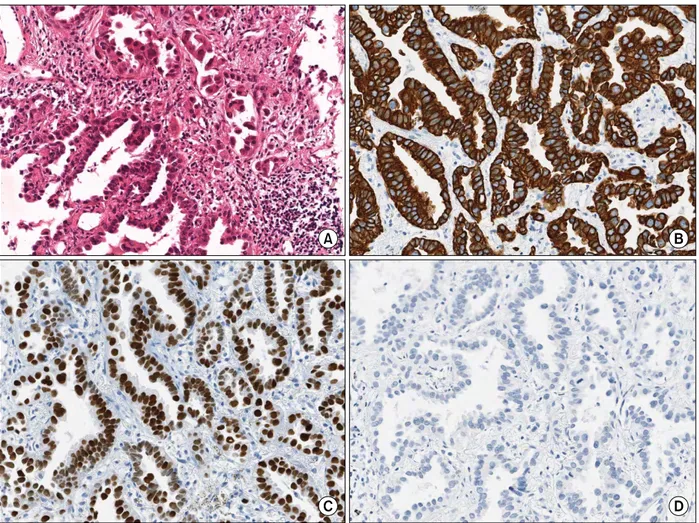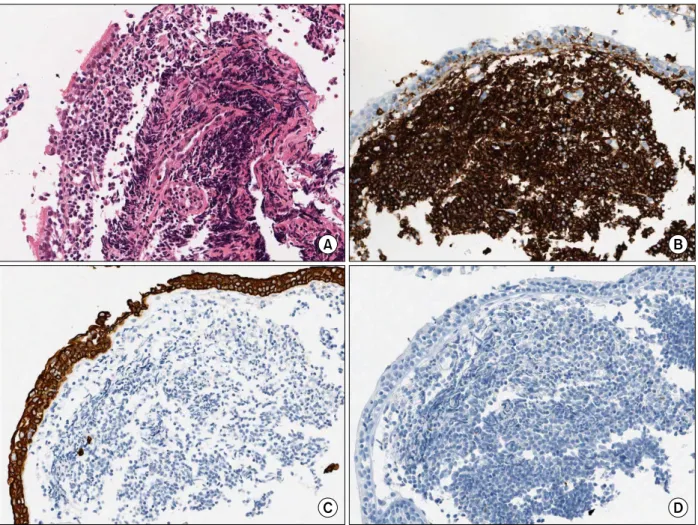(MALT) Type
Chi Young Jung, M.D. 1 , Kun Young Kwon, M.D. 2
Departments of 1 Internal Medicine and 2 Pathology, Keimyung University School of Medicine, Daegu, Korea
Extranodal marginal zone B-cell lymphoma of mucosa-associated lymphoid tissue type (extranodal MZL) is a distinct subgroup of non-Hodgkin's lymphoma. Pulmonary extranodal MZL is a rare entity and accounts for less than 0.5%
of primary pulmonary malignancies. Only a few cases of simultaneous occurrence of lung cancer and pulmonary extranodal MZL have been reported. A 60-year-old woman was referred to our hospital with a pulmonary nodule.
She was diagnosed with lung adenocarcinoma by percutaneous needle biopsy. The protrusions into the left main bronchus were found by accident while performing bronchoscopy during lung cancer evaluation. The bronchial lesions were diagnosed as extranodal MZL. Although the patient underwent surgical resection for the lung adenocarcinoma, the pulmonary extranodal MZL was left untreated; it was monitored during follow-up visits. To our knowledge, this is the first report of synchronous lung adenocarcinoma and primary extranodal MZL of the main bronchus.
Key Words: Lymphoma, B-Cell, Marginal Zone; Adenocarcinoma of Lung; Lung Neoplasms
Address for correspondence: Chi Young Jung, M.D.
Department of Internal Medicine, Keimyung University School of Medicine, 56, Dalseong-ro, Jung-gu, Daegu 700-712, Korea
Phone: 82-53-250-8095, Fax: 82-53-250-7434 E-mail: jcy2475@dsmc.or.kr
Received: Apr. 10, 2012 Revised: Apr. 24, 2012 Accepted: May 18, 2012
CC


